Understanding phytoplankton blooms and fish production key for success
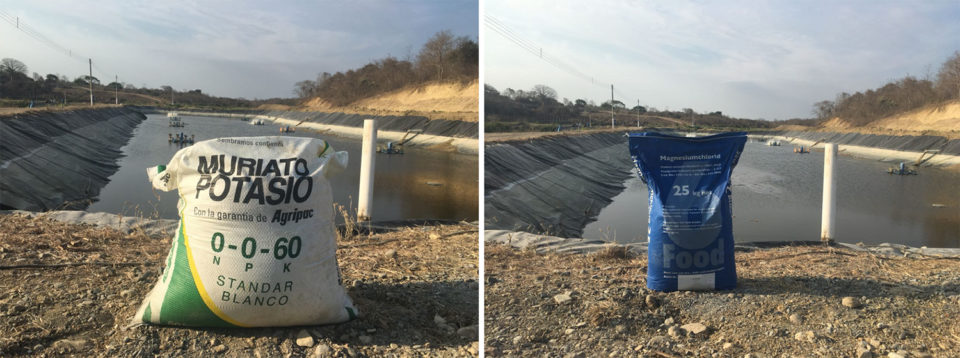
Pond fertilization is important to increase primary productivity in extensive culture ponds and enhance the base of the food web for aquaculture animals. Fertilizers also are used in semi-intensive aquaculture to supplement feed until feed inputs reach 20 to 30 kg per hectare per day and nutrients from metabolic wastes are sufficient to maintain plankton blooms. Intensive ponds often are fertilized before stocking to develop plankton blooms, because recently stocked fingerling or post-larvae benefit from natural food organisms.
Organic fertilizers have been used widely to promote fish production in ponds. However, there also has been much use of urea, triple superphosphate and other commercial chemical fertilizers in aquaculture. Many pond fertilization rates have been proposed, but a widely accepted guideline for establishing pond fertilization rates has not been forthcoming. Managerial judgement is the common way by which pond fertilization rates are established. Therefore, I will provide some information about pond fertilization that may be useful to pond managers.
Any one or combination of at least 14 mineral nutrients that could be in short supply in ponds relative to phytoplankton requirements. Fortunately, only two mineral nutrients (nitrogen and phosphorus) consistently limit phytoplankton productivity in freshwater ponds. Although primary productivity in ponds with low-alkalinity waters can be limited by a shortage of carbon dioxide, this problem is solved by liming rather than fertilization. Nitrogen and phosphorus applications usually will also increase primary productivity in ponds filled by brackishwater or seawater, but iron also may be an important limiting factor in some situations.
Although there is no widespread consensus about pond fertilization rates, there is general agreement that fertilizer applications should be made frequently and that changes in phytoplankton abundance provide evidence of when the next fertilizer application is needed. Fertilizers may be applied every two to three days, weekly or biweekly until the phytoplankton bloom develops. Afterwards, fertilizer applications are made as necessary to maintain the bloom. The most practical way of assessing the plankton bloom is water clarity, and the Secchi disk visibility provides an index of water clarity (Table 1).
Boyd, pond fertilization, Table 1
| Secchi disk reading (cm) | Interpretation |
|---|
Secchi disk reading (cm) | Interpretation |
|---|---|
| <20 cm | Pond too turbid. If pond is turbid with phytoplankton, there will be problems with low dissolved oxygen concentrations. When turbidity is from suspended soil particles, productivity will be low. |
| 20-30 cm | Turbidity becoming excessive. Fertilizer application should be delayed. |
| 30-45 cm | If turbidity is from phytoplankton, pond is in good condition. |
| 45-60 cm | Phytoplankton becoming scarce. Fertilizer should be applied. |
| >60 cm | Water is too clear. Inadequate productivity and danger of aquatic weed problems. |
Nitrogen and phosphorus concentrations
There are many opinions and some research-based estimates of concentrations of nitrogen and phosphorus necessary to cause a phytoplankton bloom. Development of noticeable blooms has been reported to occur at 0.01-0.1 mg/L of soluble inorganic phosphorus and 0.1-0.75 mg/L of inorganic nitrogen (ammonia nitrogen plus nitrate nitrogen). A high abundance of phytoplankton is needed in fertilized aquaculture ponds, so the concentration of the two nutrients soon after fertilization should be near the upper end of the two concentration ranges.
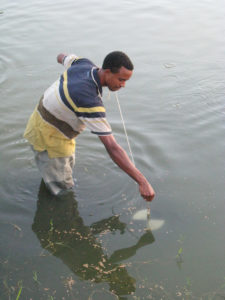
Phytoplankton cells usually have a N:P ratio of around 7:1 (weight not molar basis) suggesting that fertilization application should be at a rate to provide a 7:1 N:P ratio in pond water. Cyanobacteria (blue-green algae) are usually considered undesirable in aquaculture ponds, and they are thought to be favored by N:P ratios above 15:1. Although there is not irrefutable evidence of a N:P ratio above 15:1 favoring blue-green algae or other phytoplankton species, it is certain high phosphorus concentrations definitely favor blue-green algae.
In many countries, ponds have traditionally been fertilized with livestock manures and other agricultural wastes. Nitrogen and phosphorus concentrations vary greatly among different types of organic fertilizers depending upon their moisture contents and several other factors. Fish production increases with greater applications of livestock manure up to about 150 kg/ha/day (dry weight basis). In ponds fertilized with livestock manure at 150 kg/ha/day, daily nutrient inputs could range from 0.75-4.06 kg N and 0.51-4.53 kg P2O5. The N:P ratios in animal manures applied to ponds usually are 2:1-4:1.
Manures and other organic fertilizers must decompose for nitrogen and phosphorus to be released, and nitrogen release in influenced by its retention in microbial biomass when organic materials with a high C:N ratio decompose. Because manure and other organic fertilizers vary in composition, decomposition rate, and extent of nitrogen mineralization, aside from regulating organic matter input, nitrogen and phosphorus inputs are difficult to adjust.
Early work and even many recent studies on use of chemical (commercial) fertilizers in aquaculture did not consider nitrogen and phosphorus concentrations or N:P ratios. Rather, the studies simply determined the effects of fertilizer applications of different amounts of nitrogen and phosphorus (usually on a kg/ha basis) or primary productivity and fish or shrimp production. The application rates have typically ranged from 10 to 20 kg N/ha and 2 to 8 kg P2O5/ha (0.9-3.5 kg P/ha). The N:P ratio in commercial fertilizer use in ponds has varied greatly, and in some situations, phosphorus-only fertilization has been used.
The average depths of ponds vary, but most are between 1 and 2 meters. The range in fertilizer application rates (in kg/ha) mentioned in the previous paragraph are equivalent to as little as 0.5 mg/L nitrogen and 0.045 mg/L phosphorus to as much as 2 mg/L nitrogen and 0.35 mg/L phosphorus. These concentrations are well above minimum concentrations of nitrogen and phosphorus usually reported to cause noticeable phytoplankton blooms in natural waters.
Target concentrations, pathway losses
Concentrations of nitrogen and phosphorus necessary to cause phytoplankton blooms in pond water can be determined in bioassay tests by comparing the response of phytoplankton to different concentrations of the two nutrients. With this information, it is possible to establish a target nitrogen and phosphorus concentration, measure nitrogen and phosphorus in pond water, and calculate the necessary inputs of the two nutrients in fertilizer to attain the target concentration. Although nutrient bioassays may appear a logical and scientific means of establishing fertilization rates, the effort required to run nutrient bioassays and determine nitrogen and phosphorus concentrations in individual ponds is time and cost prohibitive. It also is impossible for most smallholder farmers.
Dissolved inorganic phosphorus and nitrogen are quickly removed from pond water by phytoplankton. Phosphorus is quickly adsorbed from water by bottom sediment. Ammonia can be lost by diffusion to the atmosphere or it can be transformed to nitrate by biological nitrification. Nitrate is converted to dinitrogen gas (N2) by denitrifying bacteria, and the gaseous nitrogen diffuses into the air.
The several pathways of nitrogen and phosphorus losses from pond water make it difficult to fertilize a pond to attain a specific N:P ratio range. Studies have shown that in ponds treated with fertilizers to obtain N:P ratios of 10:1, 16:1 and 20:1, but after 10 days the measured N:P ratios in pond water ranged from 4.4 to 9.4.
The rather low N:P ratio in aquaculture pond water may be a main reason that cyanobacteria often become dominant. However, the more likely reason is that large amounts of phosphorus are applied to aquaculture ponds simply favor blue-green algae.
Perspectives
In summary, pond fertilization is more art than science. Nevertheless, an understanding about relationships among pond fertilization, phytoplankton blooms, and fish production can improve the likelihood of success.
Now that you've reached the end of the article ...
… please consider supporting GSA’s mission to advance responsible seafood practices through education, advocacy and third-party assurances. The Advocate aims to document the evolution of responsible seafood practices and share the expansive knowledge of our vast network of contributors.
By becoming a Global Seafood Alliance member, you’re ensuring that all of the pre-competitive work we do through member benefits, resources and events can continue. Individual membership costs just $50 a year.
Not a GSA member? Join us.
Author
-

Claude E. Boyd, Ph.D.
Professor Emeritus
School of Fisheries, Aquaculture and Aquatic Sciences
Auburn University
Auburn, Alabama 36849 USA
Tagged With
Related Posts
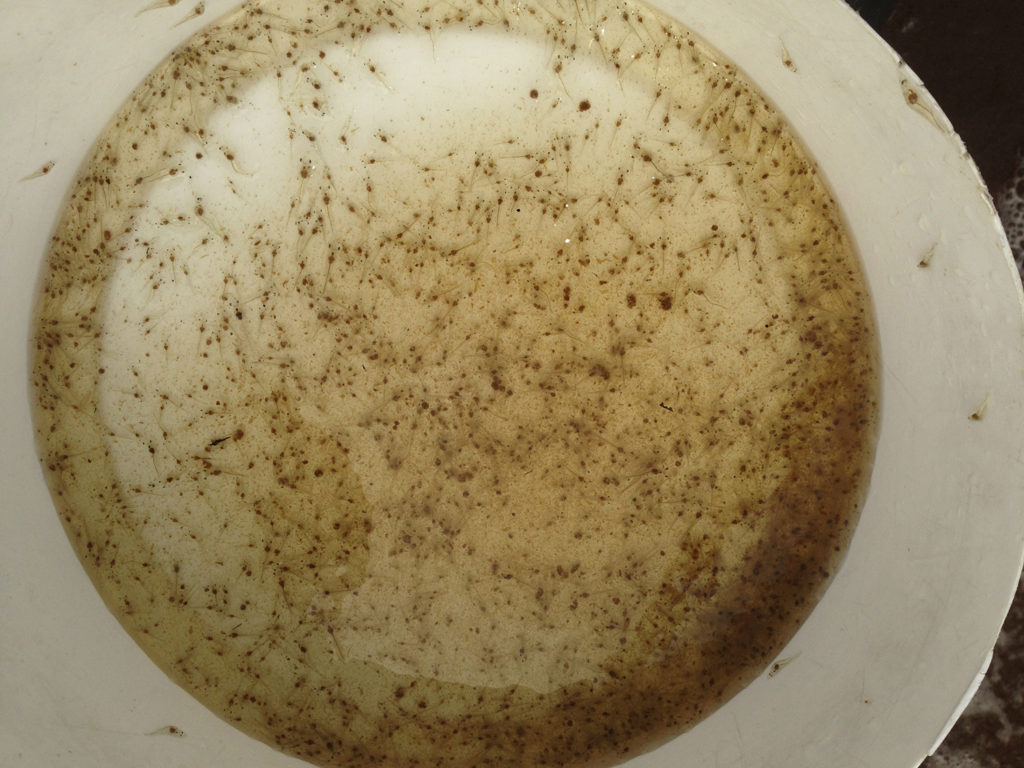
Responsibility
Carbon-nitrogen ratios in pond fertilization and biofloc systems
Prof. Claude Boyd on the importance of carbon-nitrogen ratios for pond fertilization and biofloc systems, and the relevance of precise carbohydrate inputs.
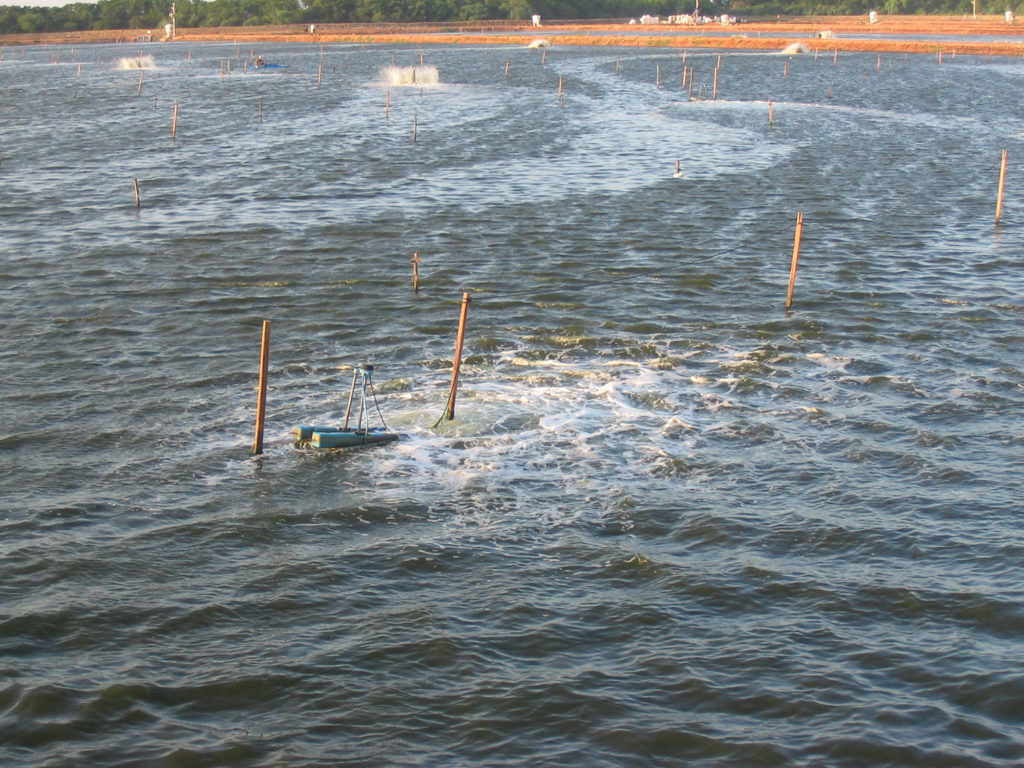
Health & Welfare
Dissolved oxygen dynamics
Dissolved oxygen management is the most important requirement of aquaculture pond water quality. DO concentration below 3 mg/L is stressful to shrimp.

Aquafeeds
Multiple methods for phytoplankton assessment
The simplest tool for assessing phytoplankton abundance in aquaculture ponds is the Secchi disk. An electronic turbidimeter can be used to measure the amount of light scattered by a water sample.
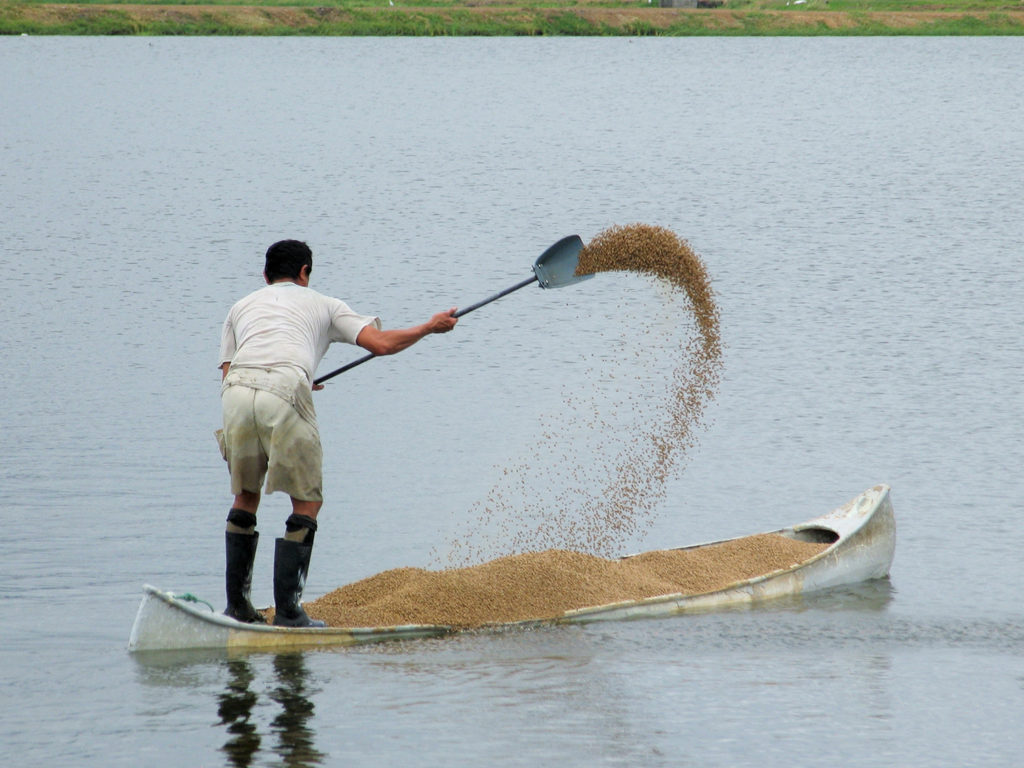
Responsibility
Ammonia nitrogen dynamics in aquaculture
The major sources of ammonia in aquaculture ponds are fertilizers and feeds, and problems with high ammonia are most common in feed-based aquaculture.

